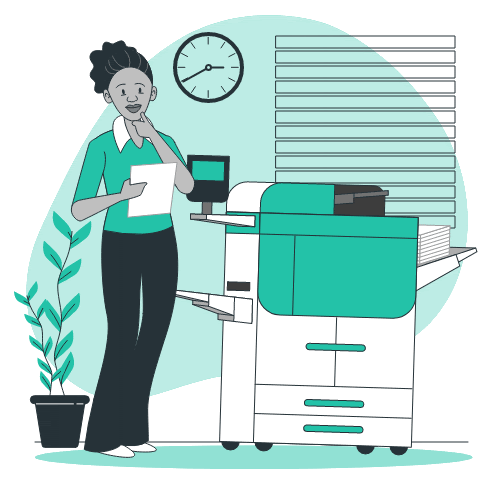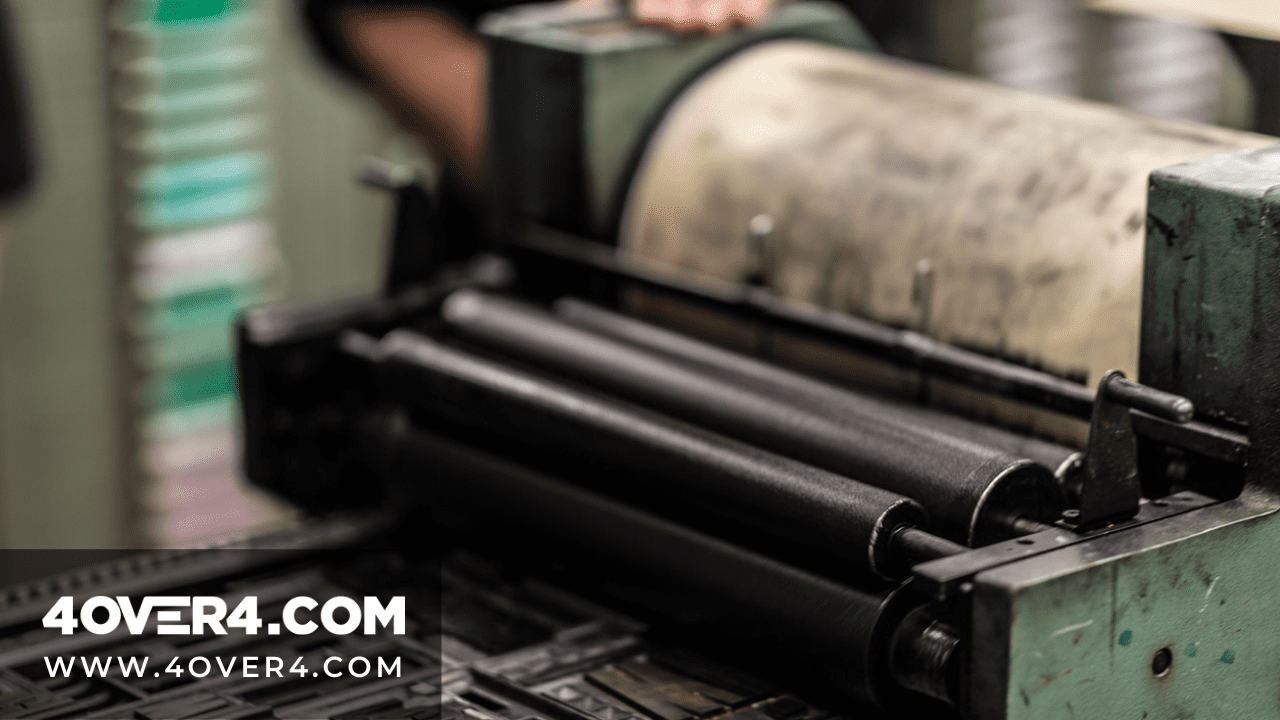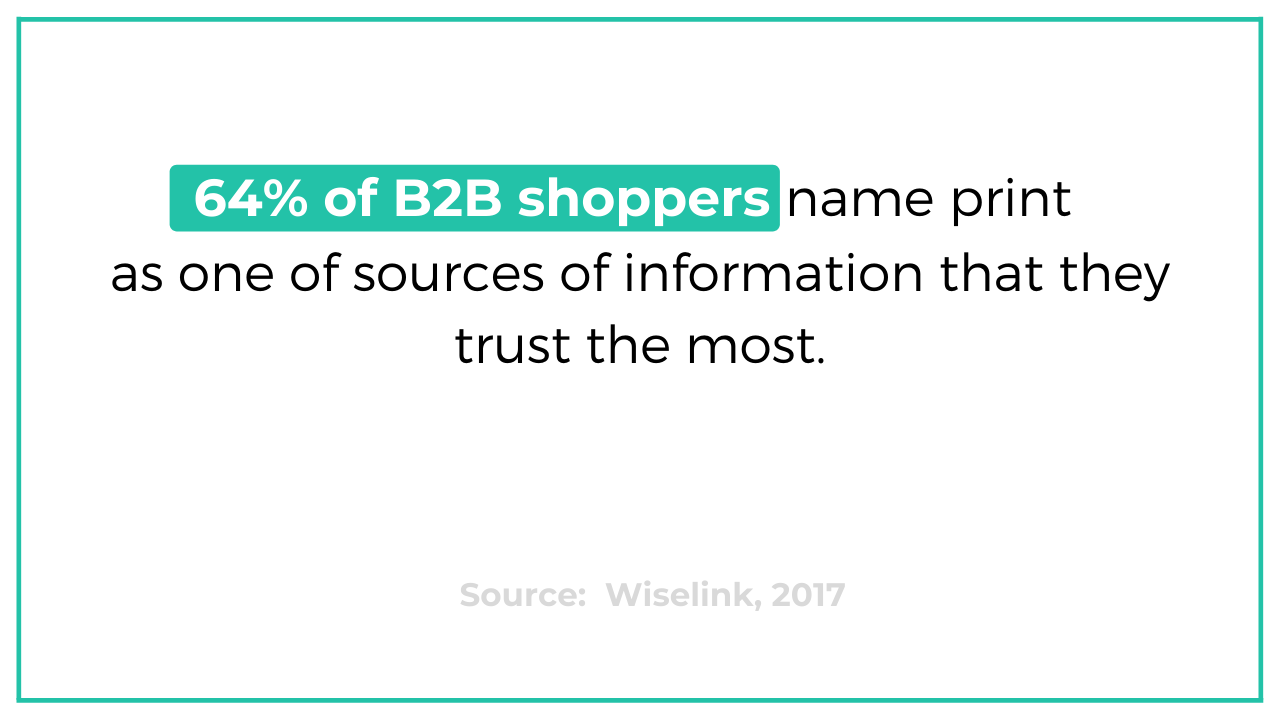Offset printing is a technique whereby a rubber roller makes contact with the printing plate and then presses this image onto the paper. Invented in 1903, it has largely replaced the standard direct plate printing in brochure printing and many custom printing jobs. The roller pin mainly helps to keep the plate from wearing out. In addition to the use of a roller, a lithographic process is also part of the modern brochure printing process. The process repels certain oils and water and helps to guide the right types of inks to the rollers.

Offset Printer Illustration
Some brief history

A vintage printer
The lithographic process is much older than offset printing, with the first known lithographic machine dating back to 1785. It was not until the 1880s when rubber became more plentiful that the rollers could be thoroughly integrated. Thanks to offset printing, a plate can now withstand a million impressions, making it ideal for heavy print runs.
By using the offset printing technique, brochure printing jobs and other large custom printing jobs can be finished in a very short period of time at a relatively affordable cost. In order to keep the quality high and costs low for orders that require over 500 copies, online printing and business printing now tend to automatically use offset printing.
How offset printing trumps digital printing

The raging debate about what options work better in printing can be settled easily. Offset printing has its advantages and disadvantages and so does digital printing. On a very general scale, the major difference is that offset printing can handle big projects while digital does smaller quantities.
In another debate, people keep emphasizing that print advertising is losing relevance in a fast-rising online advertising market.
The statistics however indicate that printing is still vastly popular across a wide section of the market.
The essence of offset printing
For Printing Companies, the most expensive component of offset printing is the initial configuration process. After the plates have been made and the machine has been set up, the only real costs to the person who has ordered the print job are the costs of the ink and additional paper. The equipment itself runs smoothly and without interruption, producing the necessary runs in a very short period of time.

Woman printing on a digital printer
Benefits of offset printing
- Offset printing guarantees high-quality images- The rubber blanket that offset printers have conforms to the texture of the printing surface. It also gives the print operator control over the ink flow. Consequently, there are fewer prints that go to waste. And that gives you sharp, succinct images because there is enough contrast.
- Production of printing plates is quick and easy. Offset printing is insanely cheap compared to other styles of printing because it allows for the printing of large quantities of prints. When you compare the quality, the speed, and the quantity it can handle, it is ultimately cheap.
-
The printing plates have a longer shelf life compared to direct litho presses. Offset printing plates last longer because there is no direct contact between the plate and the printing surface. It is estimated that developed plates that are used with optimized inks and fountain solutions can last well over more a million impressions.
-
During printing, other printers risk running out of paper or ink. When the ink runs out the result is faded images. But since offset printing gives the print operator control, they can control ink flow. They can also gauge the amount of paper remaining. The operator simply turns keys to ensure that print quality remains at an optimal level.
-
Saves time. Offset printing is fast and can handle large quantities. This is time that you can use to invest energy into other tasks and even double your orders. Consequently you can earn more because you are handling and delivering more.
-
Most commonly, offset printing allows the adjusting of ink on the fountain roller. The density of the color is controlled and well-balanced. You will have neither faded nor overly colored images.
-
Variety of printing materials- Offset printing is very flexible. It works for a multitude of printing services and materials too. Whether you want to print your project on leather, fabric, metal, or any other material. Even when it comes to card and paper stock, offset printing will comfortably work with either.
The downsides of offset printing
-
More set up time- It takes time to create plates and perform transfers. Therefore, if you have a time-sensitive or last-minute order, digital would be better.
-
It is not as cost-effective for smaller projects as it is for high volumes. If your quantities are small you will end up paying more for the job.
-
Customization and personalization of a product are challenging for offset printing. Accurate customized prints are produced by digital printing.

A printer in an office space
Fast turnarounds
Fast turnarounds are particularly ideal for brochure printing and business printing jobs. Especially in the digital age, many clients find themselves up against tight deadlines. Placing the order via online printing allows clients to submit PDFs or other digital designs overnight, and arrange for the fastest possible printing delivery.
Online printers specialize in quickly transforming a digital file into a physical reality. Additionally, the integration of the digital process makes communication turnaround times much faster. Proofs can be produced in a fraction of the time, allowing clients to quickly approve designs and get the presses rolling. Simply put, there is no faster or more economical way to print thousands of copies of an item than by using offset printing.
Choose the appropriate method
For fast turnaround times along with high-quality business printing products like poster printing or business card printing you need to decide which printing method works for you. For high volumes choose offset and for smaller quantities choose digital printing.




